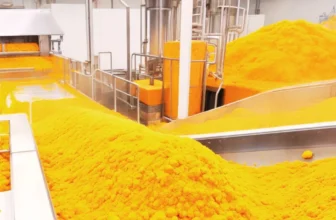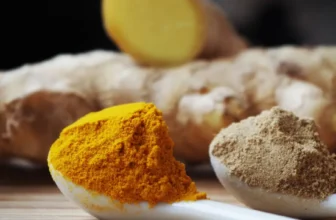Top Turmeric-Producing Countries: A Global Overview
Turmeric, famous for its vibrant yellow color and renowned for its numerous health benefits, is a staple in many cuisines and medicinal practices around the globe. This versatile spice has been cultivated for thousands of years, particularly in tropical and subtropical regions. In this article, we will explore the top turmeric-producing countries, examining their production processes, economic impact, and the unique qualities that make their turmeric stand out.
Table of Contents
India: Top Tumeric Producing Country and Powerhouse
India is the largest turmeric-producing country, contributing to over 80% of the world’s supply. The regions of Andhra Pradesh, Tamil Nadu, Karnataka, Odisha, and West Bengal are particularly renowned for their high-quality turmeric production. As the top turmeric-producing country, India plays a crucial role in meeting the global demand for this golden spice
- Geographical Advantage: India’s climate and soil conditions are ideal for turmeric cultivation, with a tropical climate that provides the necessary heat and moisture.
- Varieties: India produces several varieties of turmeric, including Erode, Alleppey Finger, and Salem. Each variety has distinct characteristics, such as color intensity and curcumin content.
- Cultural Significance: Turmeric is deeply ingrained in Indian culture, not only as a culinary spice but also in traditional medicine (Ayurveda) and religious rituals.
China: A Growing Turmeric Producer
China is the second turmeric-producing country, primarily focusing on the export of turmeric powder and extracts.
- Regions of Production: Major turmeric-producing areas include Yunnan, Guangdong, and Sichuan provinces.
- Innovation in Cultivation: Chinese producers often utilize advanced agricultural techniques to enhance yield and quality.
- Market Focus: China primarily exports turmeric to meet the growing demand for turmeric supplements and extracts in global markets.
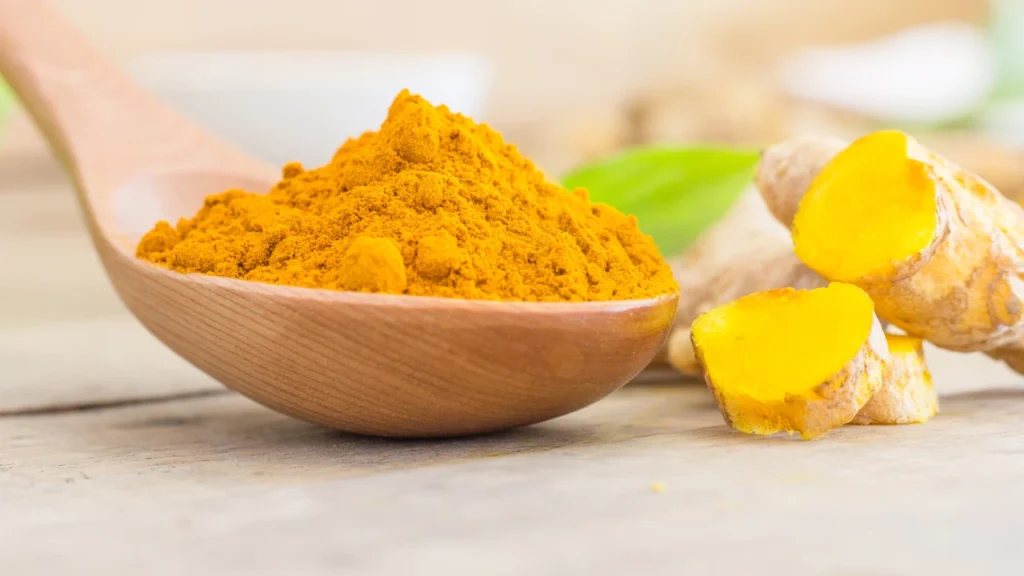
Bangladesh: High-Quality Turmeric Production
Bangladesh is the third Turmeric-Producing country known for producing high-quality turmeric, with distinct aroma and color.
- Cultivation Regions: Major turmeric-growing areas include the districts of Chittagong, Sylhet, and Rangpur.
- Traditional Farming Methods: Many farmers in Bangladesh still use traditional methods, which contribute to the unique quality of their turmeric.
- Economic Impact: Turmeric cultivation plays a crucial role in the livelihoods of many rural communities in Bangladesh.
Pakistan: A Rising Turmeric Exporter
Pakistan is steadily increasing its turmeric production and exports, focusing on improving quality and meeting international standards.
- Growing Regions: Key areas include Punjab, Sindh, and Khyber Pakhtunkhwa.
- Improved Agricultural Practices: Pakistani farmers are adopting modern agricultural practices to boost turmeric yield and quality.
- Export Growth: Pakistan’s turmeric exports are growing, particularly to Middle Eastern and European markets.

Sri Lanka: Renowned for Unique Flavor
Sri Lanka is famous for its unique turmeric, known for its flavor and medicinal properties.
- Cultivation Areas: The central and southern regions of Sri Lanka are the main turmeric-growing areas.
- Distinctive Characteristics: Sri Lankan turmeric is prized for its deep yellow color and high curcumin content.
- Sustainable Practices: Many Sri Lankan farmers use sustainable farming practices, ensuring the long-term viability of turmeric cultivation.
Thailand: Quality Turmeric for Export
Thailand produces high-quality turmeric, which is primarily exported to international markets.
- Production Regions: Key turmeric-producing regions include Chiang Mai and Lampang.
- Focus on Quality: Thai turmeric is known for its high quality, with strict adherence to international standards.
- Export Markets: Thailand exports turmeric to various countries, including Japan, the United States, and Europe.
Global Market Dynamics
The global turmeric market is influenced by various factors, including climatic conditions, farming practices, and international demand. The increasing popularity of turmeric health benefits has led to a surge in demand, particularly in the supplement and natural health product markets.
- Health Benefits: Turmeric is renowned for its anti-inflammatory, antioxidant, and antimicrobial properties. Curcumin, the active compound in turmeric, is the primary driver of these health benefits.
- Consumer Trends: There is a growing trend towards natural and organic products, which has boosted the demand for high-quality, organically grown turmeric.
- Economic Impact: Turmeric cultivation provides significant economic benefits to farmers in producing countries, supporting rural livelihoods and contributing to national economies.

Challenges and Opportunities
While the turmeric industry offers numerous opportunities, it also faces several challenges.
- Climate Change: Changing climatic conditions can affect turmeric yield and quality, posing a risk to producers.
- Market Competition: The increasing number of turmeric-producing countries has intensified competition in the global market.
- Quality Standards: Meeting international quality standards and regulations can be challenging for producers, especially in developing countries.
Conclusion
The global turmeric market is vibrant and dynamic, with Top producing countries of Tumeric like India, China, and at the forefront. Each country brings its unique strengths to the table, from India’s vast production capacity and cultural heritage to Myanmar’s organic turmeric and China’s innovative agricultural techniques. As demand for this golden spice continues to grow, the turmeric industry faces both challenges and opportunities that will shape its future trajectory.
Other Top Selling Products
-
 Premium Crushed Red Chili (Crushed Lal Mirch, Darra Mirch) – 100% Natural & Pure | Super Spicy Flavour & Vibrant Color | Best Price in Pakistan₨ 219.00 – ₨ 780.00Price range: ₨ 219.00 through ₨ 780.00★★★★★
Premium Crushed Red Chili (Crushed Lal Mirch, Darra Mirch) – 100% Natural & Pure | Super Spicy Flavour & Vibrant Color | Best Price in Pakistan₨ 219.00 – ₨ 780.00Price range: ₨ 219.00 through ₨ 780.00★★★★★ -
 Premium Black Cumin (Kala Zeera) – 100% Natural Organic & Pure | Intense Flavour & Rich Aroma | Best Price in Pakistan₨ 373.00 – ₨ 860.00Price range: ₨ 373.00 through ₨ 860.00★★★★★
Premium Black Cumin (Kala Zeera) – 100% Natural Organic & Pure | Intense Flavour & Rich Aroma | Best Price in Pakistan₨ 373.00 – ₨ 860.00Price range: ₨ 373.00 through ₨ 860.00★★★★★ -
 Premium Kishmish (Raisin) Sundarkhani – 100% Natural Organic & Pure | Rich in Nutrients & Sweet Flavour | Best Price in Pakistan₨ 281.00 – ₨ 410.00Price range: ₨ 281.00 through ₨ 410.00
Premium Kishmish (Raisin) Sundarkhani – 100% Natural Organic & Pure | Rich in Nutrients & Sweet Flavour | Best Price in Pakistan₨ 281.00 – ₨ 410.00Price range: ₨ 281.00 through ₨ 410.00 -
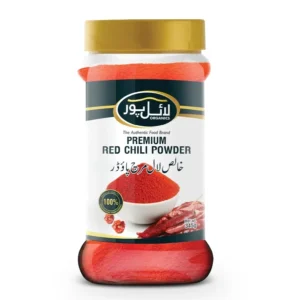 Premium Red Chili Powder (Lal Mirch Powder) – 100% Natural & Pure | Hot Spicy Flavour & Vibrant Color | Best Price in Pakistan₨ 200.00 – ₨ 1,015.00Price range: ₨ 200.00 through ₨ 1,015.00
Premium Red Chili Powder (Lal Mirch Powder) – 100% Natural & Pure | Hot Spicy Flavour & Vibrant Color | Best Price in Pakistan₨ 200.00 – ₨ 1,015.00Price range: ₨ 200.00 through ₨ 1,015.00 -
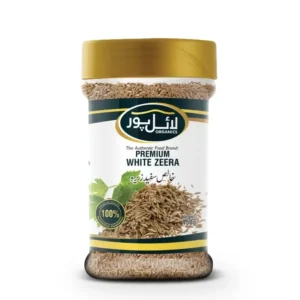 Premium White Cumin (Safaid Zeera) – 100% Natural Organic & Pure | Delicate Flavour & Rich Aroma | Best Price in Pakistan₨ 280.00 – ₨ 624.00Price range: ₨ 280.00 through ₨ 624.00
Premium White Cumin (Safaid Zeera) – 100% Natural Organic & Pure | Delicate Flavour & Rich Aroma | Best Price in Pakistan₨ 280.00 – ₨ 624.00Price range: ₨ 280.00 through ₨ 624.00 -
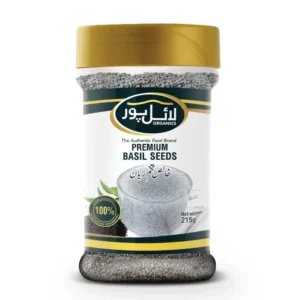 Premium Basil Seeds (Tukhm e Reyan | Tukhm e Rehan) – 100% Natural Organic & Pure | Rich in Nutrients & Fiber | Best Price in Pakistan₨ 446.00 – ₨ 1,013.00Price range: ₨ 446.00 through ₨ 1,013.00
Premium Basil Seeds (Tukhm e Reyan | Tukhm e Rehan) – 100% Natural Organic & Pure | Rich in Nutrients & Fiber | Best Price in Pakistan₨ 446.00 – ₨ 1,013.00Price range: ₨ 446.00 through ₨ 1,013.00




